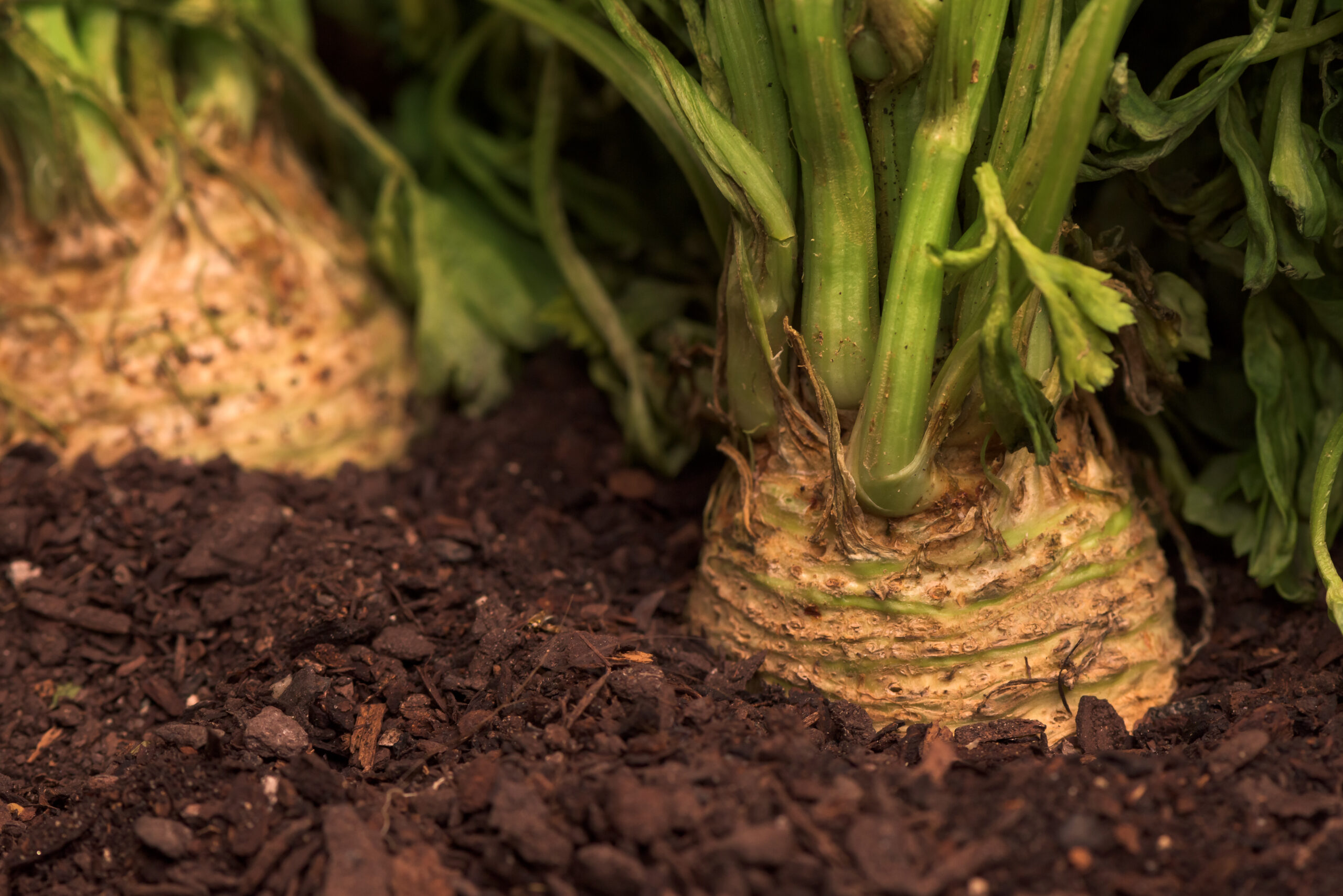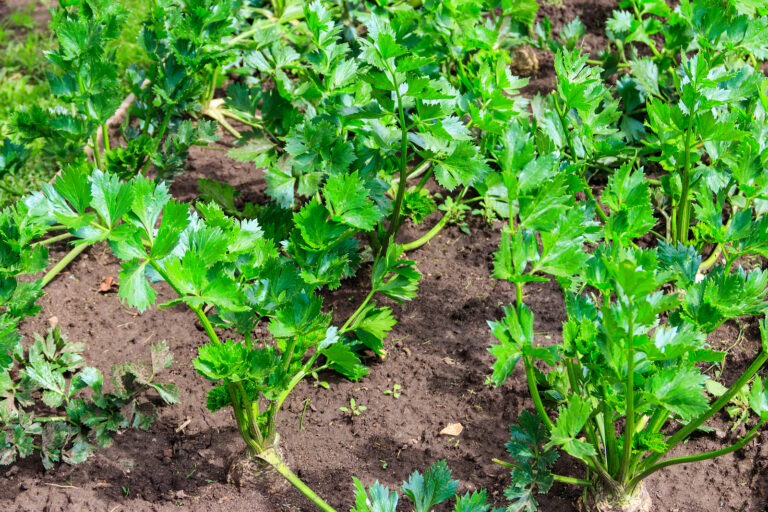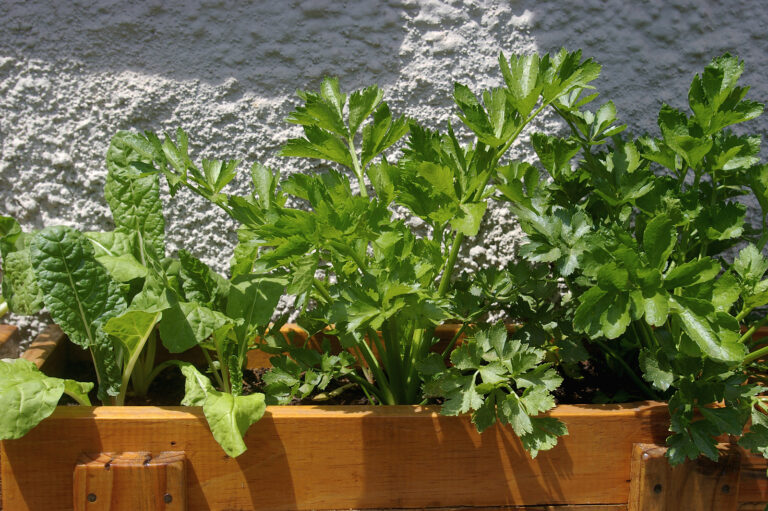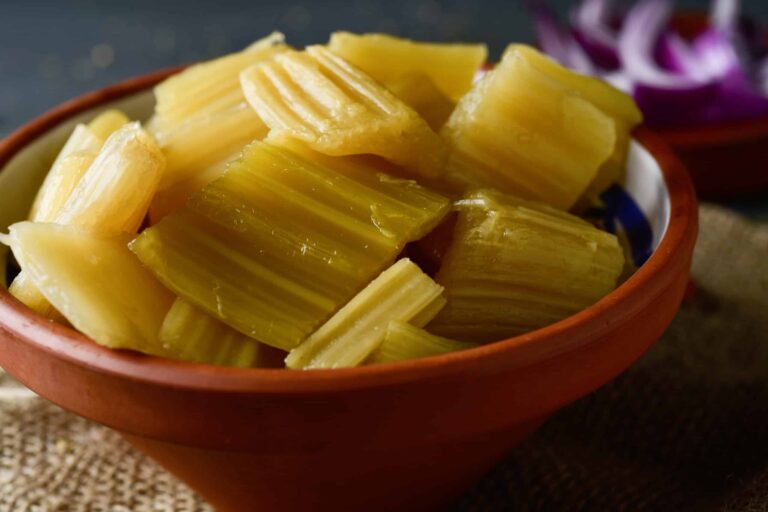Celery vs. Celeriac: Growing, Harvesting, and Cooking Differences
Many gardeners are surprised to learn that celery and celeriac (also called celery root), though closely related, are grown and used quite differently. I’ve grown both for years in my raised beds, and while they share a family lineage, they offer unique challenges in the garden and distinct flavors in the kitchen. Understanding the differences will help you decide which one—or both—deserves a spot in your garden.
Growing Differences
Celery
- Primary crop: Crisp stalks and leaves.
- Growing season: Prefers cool, mild weather; best planted in spring or fall.
- Requirements: Constant moisture, fertile soil, and regular feeding.
- Challenge: Sensitive to heat and irregular watering.
Celeriac (Celery Root)
- Primary crop: Enlarged root (swollen hypocotyl).
- Growing season: Long season crop (110–140 days).
- Requirements: Deep, loose soil with steady moisture.
- Challenge: Needs consistent weeding and a long growing window.
Harvesting Differences
- Celery: Stalks are ready when they’re thick, crisp, and about 12–18 inches tall—usually 85–120 days from planting.
- Celeriac: Roots are harvested when 3–5 inches across, after 110–140 days. I’ve found a light frost can even improve flavor.
Cooking Differences
- Celery: Used raw in salads, added to soups, stir-fries, and as a flavor base in stocks. Best for crunch and freshness.
- Celeriac: Peeled and cooked; great roasted, mashed, or pureed into soups. Its flavor is earthy with a hint of celery.
My Experience in the Kitchen
When I want crispness in a salad, celery is unbeatable. But for winter soups and roasted dishes, celeriac brings a depth of flavor that celery alone can’t provide. Both are staples in my kitchen, but I grow them for entirely different reasons.
Celery vs. Celeriac: Key Differences
| Feature | Celery | Celeriac (Celery Root) |
|---|---|---|
| Edible Part | Stalks and leaves | Enlarged root (swollen hypocotyl) |
| Growing Season | 85–120 days; cool weather crop | 110–140 days; long-season crop |
| Soil Needs | Rich, moist, fertile soil | Deep, loose soil with steady moisture |
| Watering | Requires consistent, even watering | Same—needs steady moisture for root development |
| Harvest Time | Stalks 12–18 inches tall | Roots 3–5 inches across, after frost if possible |
| Cooking Uses | Raw in salads, soups, stir-fries, flavor base | Roasted, mashed, soups, purees, earthy flavor |
| Flavor | Fresh, crisp, mild celery taste | Earthy, nutty, with a celery-like undertone |
| Challenges | Sensitive to heat and drought | Needs long season and consistent weeding |
✅ Quick takeaway: Grow celery for crunch and freshness, celeriac for earthy, winter-friendly flavor. Both are rewarding but demand patience and care.
Which Should You Grow: Celery or Celeriac?
If you’re deciding between celery and celeriac, the best choice depends on your climate, cooking style, and patience in the garden.
- Choose Celery if:
- You enjoy fresh salads, crunchy snacks, and stir-fries.
- You have consistent time for daily watering and care.
- Your garden has a long, cool season or you can plant in spring and fall.
- Choose Celeriac if:
- You prefer hearty winter cooking—soups, stews, roasts, and purees.
- You can dedicate space for a long-season crop.
- You want a root vegetable that stores well into winter.
👉 My personal approach? I grow celery in spring for crisp summer eating and celeriac through fall for winter meals. That way, my kitchen gets the best of both worlds.
Celery vs. Celeriac Planting Calendar
| Season | Celery | Celeriac |
|---|---|---|
| Early Spring | Start seeds indoors 10–12 weeks before last frost. Transplant out once soil warms slightly. | Start seeds indoors 10–12 weeks before last frost. Needs a head start due to long season. |
| Late Spring | Transplant seedlings outdoors once nighttime temps are above 50°F. | Continue growing seedlings indoors or under cover until strong enough to transplant. |
| Summer | Grow through cool summers; in hot climates, protect with shade cloth. | Transplant outdoors early summer. Keep watered and weed-free for steady root development. |
| Fall | Sow for a fall crop in mild climates. Harvest before hard frost. | Roots mature in fall; harvest after 110–140 days, ideally after a light frost for best flavor. |
| Winter | In mild zones, overwinter with protection; otherwise, not suitable. | Store harvested roots in a root cellar or cool place; lasts several months. |
✅ Quick Tip:
Celery fits best into gardens with two cooler growing windows (spring/fall), while celeriac is best as a single, long-season crop maturing in late fall.
Celery Growing Hub
Start here: The Ultimate Celery Growing Guide: From Seed to Harvest
Celery Basics & Types
- Types of Celery Explained: Pascal, Leaf, and Celeriac Compared
- Best Celery Varieties for Home Gardeners
- Celery vs. Celeriac: Growing, Harvesting, and Cooking Differences
- What You Should Know About Celery Pollination
Planting & Site Prep
- When to Plant Celery by USDA Zone
- Celery Seed Starting Tips
- Direct Sowing Celery: Outdoor Seed Starting Guide
- Proper Celery Spacing and Planting Layout for Healthy Growth
- The Best Companion Plants for Celery and What to Avoid
- How to Grow Celery in Containers or Pots
Care & Maintenance
- How to Water Celery for Crisp, Tender Stalks
- Fertilizing Celery: Feeding Tips for Bigger, Tastier Stalks
- Celery Blanching Techniques: How to Get Tender, Mild Stalks
- Celery Care Throughout the Growing Season
Pests & Diseases
- Common Celery Pests and Diseases How to Control Them Naturally
- Celery Growing Problems: Troubleshooting
Harvest & Beyond







